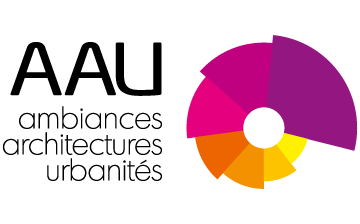VisAmUrb – Visualisation de données pour l’aménagement urbain
VisAmUrb - Urban data visualisation for urban design - Research: start-up
Financement : Appel à projet Recherche 2016 OIC (RFI consacré aux industries culturelles et créatives).
Responsable(s) scientifique : AAU-CRENAU : Vincent Tourre, partenaires: laboratoire LS2N, EDNA
Contrat de recherche terminé en mai 2019
FR
L’objectif est d’étudier les usages actuels des données urbaines par les urbanistes et architectes, et de faire une prospectives des usages potentiels.
En matière de planification urbaine, la compréhension de situations complexes est un problème difficile en raison de la multiplicité des informations impliquées possédant à la fois une composante spatiale et temporelle.
Ces informations sont représentées dans les systèmes d’informations par des données spatio-temporelles dont les caractéristiques sont très hétérogènes. Les acteurs de la planification urbaine font face à une multiplication de cartes, graphes, analyses et synthèses, qui sont des représentations partiales, partielles et parfois même déformées de la réalité du territoire. Il est donc nécessaire d’intégrer les données dans une ou plusieurs représentations fidèles permettant de prendre conscience aussi bien de la signification des données que des interactions entre des phénomènes qu’elles représentent. De plus, il est nécessaire d’utiliser ces représentations en situation réelle pour améliorer les processus d’idéation et éprouver la pertinence des représentations choisies.
EN
VisAmUrb is a start-up, interdisciplinary research project (AAU-CRENAU/LS2N/ Sustainable Cities Design Lab) on the visualisation of urban data for urban design.
Understanding the complex situations involved in urban design is very challenging due to the broad range of information, with both a spatial and temporal component, which needs to be taken into account.
This information is represented in computerised systems through spatio-temporal data with highly heterogeneous characteristics. Stakeholders in urban planning have to work with increasing numbers of maps, graphs, analyses and summaries that are biased, incomplete and sometimes even a distortion of the reality on the ground. To be fully aware of both what the data means and how the phenomena they represent interact, it is therefore essential to integrate data into one or several reliable representations. Moreover, these representations need to be used in real situations to be able to test their relevance and improve the ideation process.
Results
- Interviews with urban planning stakeholders: a tool has been created to help participants identify stakeholders, their involvement and the data used at different stages in the development of urban projects.
- Density of the built environment: a method for calculating the isovist field in 3-D. The surfaces of buildings as seen by a pedestrian walking along a route were implemented on Unity3D to calculate objective parameters for describing an area. This was followed by a controlled experiment to assess perceptions of the density of the built environment with two display modes: headset/screen, and from two positions: pedestrian/aerial view.
- Ideation workshop: (with students from the École de design Nantes Atlantique). This workshop on displaying and identifying urban data engaged students from the Sustainable Cities Masters cycle in working on the following themes: past and present/citizens’ opinions/urban atmospheres.
Publications and/or communications
- Toinon Vigier, Maxime Ameil, Vincent Tourre, “Impact of visual immersion on perception of urban morphology and density in 3D city models”. VSMM2017 – 23rd Int’l Conference on Virtual Systems and Multimedia
- Maxim Spur, Vincent Tourre, Jimmy Coppin, “Virtually Physical Presentation of Data Layers for Spatiotemporal Urban Data Visualization” . VSMM2017 – 23rd Int’l Conference on Virtual Systems and Multimedia
Prospects
The results from the project will be used in further research on creating an urban data visualisation tool, carried out by a doctoral student at AAU-CRENAU with joint supervision from LS2N-IPI. It stands to reason that interviews and studies into the criteria for evaluating the objective and subjective qualities of the urban fabric, should involve a multidisciplinary approach. Studies involving analysis of perception and evaluation of user experiences of interaction with different modes of urban visualisation are also a possibility. There are plans to respond to national and regional calls for projects in the autumn of 2017.
